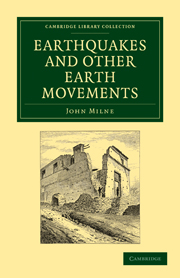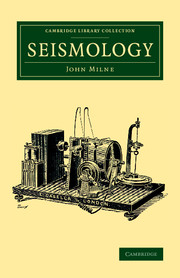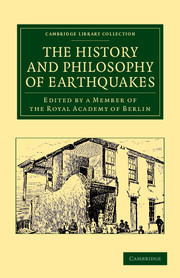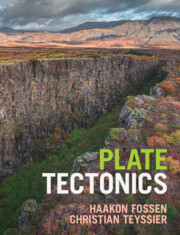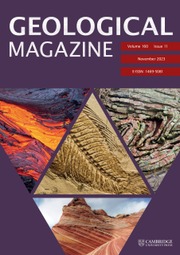Earthquakes and Other Earth Movements
John Milne (1850–1913) was a professor of mining and geology at the Imperial College of Engineering, Tokyo. While living in Japan, Milne became very interested in seismology, prompted by a strong seismic shock he experienced in Tokyo in 1880. Sixteen years later Milne and two colleagues completed work on the first seismograph capable of recording major earthquakes. This book, originally published in London in 1886, explains why earthquakes happen and what effects they have on land and in the oceans. As Milne points out, Japan provided him with 'the opportunity of recording an earthquake every week'. Starting with an introduction examining the relationship of seismology to the arts and sciences, the book includes chapters on seismometry, earthquake motion, the causes of earthquakes, and their relation to volcanic activity, providing a thorough account of the state of knowledge about these phenomena towards the end of the nineteenth century.
Product details
June 2011Paperback
9781108072632
388 pages
216 × 140 × 22 mm
0.49kg
38 b/w illus. 1 map
Available
Table of Contents
- Preface
- 1. Introduction
- 2. Seismometry
- 3. Earthquake motion discussed theoretically
- 4. Earthquake motion as deduced from experiment
- 5. Earthquake motion as deduced from observation on earthquakes
- 6. Effects produced by earthquakes upon buildings
- 7. Effects produced upon buildings continued
- 8. Effects of earthquakes on land
- 9. Disturbances in the ocean
- 10. Determination of earthquake origins
- 11. The depth of an earthquake centrum
- 12. Distribution of earthquakes in space and time
- 13. Distribution of earthquakes in time continued
- 14. Distribution of earthquakes in time continued
- 15. Barometrical fluctuations and earthquakes – fluctuations in temperature and earthquakes
- 16. Relation of seismic to volcanic phenomena
- 17. The cause of earthquakes
- 18. Prediction of earthquakes
- 19. Earth tremors
- 20. Earth pulsations
- 21. Earth oscillations
- Appendix
- Index.

